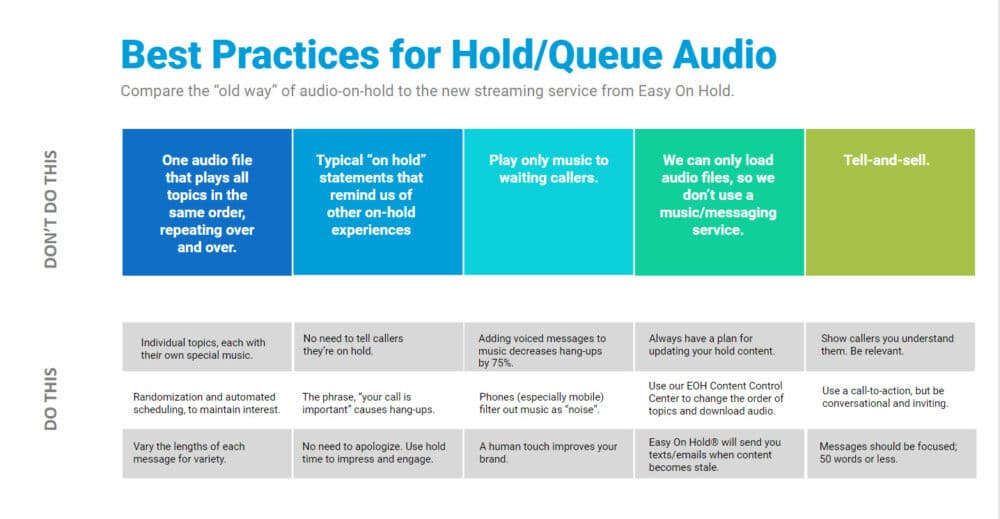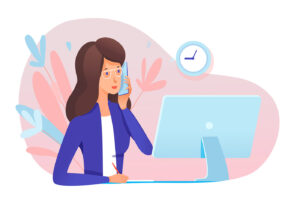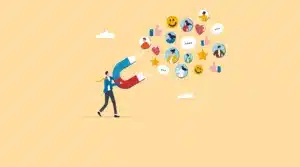Why is customer experience getting so much attention now? Because the right customer experience leads to a big payoff: Brand Loyalty.
When customers are loyal to your brand, they give you a competitive edge. They lower your cost of marketing, and always improve sales over time. Brand loyalty is important. Before a customer can make you their preferred choice, they must enjoy consistent, repeated positive experiences with your brand. Where could your brand use some improvement in customer experience?
Customer Experience Is King
How important is customer experience?
- 80% of customers consider their experience with a company as important as its products. (Salesforce)
- 86% of buyers are willing to pay more for a great customer experience. (SuperOffice)
- In 2020, customer experience replaced price and product as the key brand differentiator. (Walker)
- 88% of companies prioritize customer experience in their contact centers. (Lifesize)
- The cost of recovering a lost customer can be 6 to 7 times more expensive than the original cost of acquisition. (Kissmetrics)
Customer Experience Strategy and Customer Journey
Customer experience is a term that refers to every experience your customer has with a business; before and after the sale. A strategy for effective customer experience should include every aspect of the business. Where are gaps in your strategy? To find them, map out your customer journey.
The customer journey is the process by which a customer interacts with a company in order to achieve a goal. From gaining awareness of a brand via social media to receiving an email after a successful transaction, there are usually many and varied steps in between. It is not something to assume or predict based on your internal perspective. A customer journey is very specific to the physical experiences your customers have.
HubSpot
Key Touchpoints
Every customer journey has a goal. The goal for your company may be making a purchase, signing up for a trial, or attending an event. Along the way to the goal, your customer will reach several touchpoints (moments when the customer will come into contact with your brand). Each touchpoint on the way to a successful customer journey must represent a smooth and frictionless engagement with your brand. A digital marketing message, a web page, advertising, signage, and perhaps most important, the way an inbound call is handled.
The Inbound Call as a Friction Point
Surveys consistently show that the phone is still the number-one preferred method for contacting a company. Most calls (up to 86% according to a Microsoft Study) involve “hold time.” Customers are willing to wait on hold, but for a short time.
- 69% of customers prefer speaking with a live agent by phone. (TCN Consumer Survey from July, 2021)
- 34% of Americans say they are willing to wait 5 to 7 minutes to talk to an agent.
- 15% of callers will hang up after approximately 40 seconds on hold. (Genesys)
The friction and dissatisfaction caused by phone on hold wait time is not limited to call centers. Any business with any number of employees will have some hold time. There are ways, however, to improve the wait-on-hold experience, and in turn, reduce friction.
How To Reduce Caller On Hold Friction: DO THIS/DON’T DO THIS
Further research has exposed the dangers of using “typical” or “common” phone on hold experiences. When we think of waiting on hold (or in a queue) we think of the familiar loop of elevator music, over and over. Every few seconds the music abruptly stops and plays a voice recording that we’ve come to expect. “Thank you for holding. Your call is important to us.”
DON’T use a single audio file or loop of music.
When you provide repetition, callers become quickly bored. The mind figures out the pattern quickly and checks out, prompting hang-ups.
DO THIS: Break each topic or message into individual audio files. This provides a variety of sounds (use multiple music mixes).
DO THIS: Vary the length of each message and/or music track. It keeps callers engaged and connected with your brand.
DO THIS: Use randomization to avoid the repetitious pattern that turns callers away.
DON’T use typical “on hold” statements, including apologies.
DO THIS: Callers know they’re on hold! Rather than reminding them, focus on interesting topics. You can say, “We’re glad you called,” but the best practice is to demonstrate to your caller that you know her well. When people are being helped, they don’t hang up.
DON’T use only music on hold.
DO THIS: Use the human voice. Adding voiced messages on hold will decrease hang-ups. Some studies say, up to 75%. Customers call to talk to a human. Give them a human voice.
DO THIS: Use music sparingly. Phones are built to emphasize voice and eliminate noise. Since music is not voice, phones often suppress music, making it sound “other-worldly!”
DON’T tell-and-sell.
DO THIS: Consult with your Easy On Hold representative to develop meaningful scripts that impress callers. Try to focus on the caller. Check your script for words like, “you,” and “your.”
DO THIS: Include a call to action in your script. When callers get information, they need to know what to do with it. Help callers take the next step.
DO THIS: Be brief. Each topic should be no more than 50 words. Scripts should be concise and “punchy.” Get to the point!
Take our tips from the resources below and you’ll be able to smooth out a common rough spot in the customer journey. With a well-studied and improved customer experience, brand loyalty is sure to follow.





